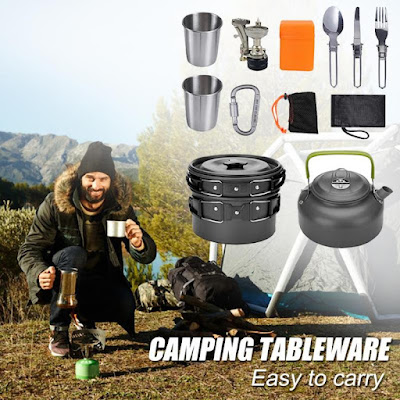Winter hiking can be a challenging and rewarding experience but it requires some extra preparation and precautions compared to hiking during other seasons. With the right gear and knowledge you can enjoy the beauty of winter landscapes and stay safe and comfortable while doing so. Here are some tips to help you have a successful winter hiking trip
Check the weather forecast and trail conditions
Before heading out check the weather forecast for the area you'll be hiking in. Look for any signs of a storm or extreme weather and plan accordingly. You'll also want to check the trail conditions to make sure they're safe for hiking. If there's been a recent snowfall you may need snowshoes or crampons to navigate the trails safely
Dress in layers
Dressing in layers is key to staying warm and comfortable while winter hiking. Start with a moisture-wicking base layer add an insulating layer for warmth and finish with a waterproof and windproof outer layer to protect against the elements. Be sure to also wear warm socks gloves and a hat to keep extremities from getting too cold
Bring the right gear
In addition to dressing in layers you'll want to bring the right gear to ensure your safety and comfort. Some essentials include
A backpack to carry your gear and extra layers
A map and compass and the knowledge to use them if needed
A headlamp or flashlight with extra batteries
A first aid kit
A multitool or knife
Hand and foot warmers
Trekking poles for added stability on icy terrain
Snowshoes or crampons depending on the trail conditions
Hydrate and fuel up
It's easy to forget to drink enough water and eat enough food while hiking in the cold but it's essential for your body to function properly. Dehydration can be just as much of a problem in the winter as it is in the summer so be sure to drink plenty of water and bring snacks high in protein and carbohydrates to keep your energy levels up
Be aware of signs of hypothermia and frostbite
Hypothermia and frostbite are serious conditions that can result from prolonged exposure to cold temperatures. Know the signs and symptoms of these conditions and be prepared to take action if needed. Symptoms of hypothermia include shivering confusion slurred speech and loss of coordination. Frostbite can present as numbness tingling, or a burning sensation in affected areas. If you or a hiking partner experience any of these symptoms seek shelter and warmth immediately
Plan your route and hike with a partner
Winter hiking can be unpredictable so it's important to plan your route and let someone know where you'll be going and when you expect to return. Hiking with a partner or group is also recommended as it provides an extra level of safety and support
By following these tips and being prepared for the challenges of winter hiking you can safely enjoy the beauty of snowy landscapes and make unforgettable memories. Just remember to always prioritize safety and take the necessary precautions to protect yourself and those hiking with you
What not to wear while winter hiking?
While it's important to dress appropriately for winter hiking to stay warm and comfortable there are some items of clothing that you should avoid wearing as they can actually make you more susceptible to the cold and potentially put you in danger. Here are a few things you should not wear while winter hiking
1-Cotton clothing: Cotton absorbs moisture and takes a long time to dry which can make you feel colder and more uncomfortable in the winter. Instead opt for moisture-wicking fabrics like wool synthetic blends or fleece which will keep you dry and warm
2-Jeans: Similar to cotton denim absorbs moisture and takes a long time to dry which can make you feel colder and increase your risk of hypothermia. Choose hiking pants made of synthetic or wool materials instead
Sneakers or shoes without good traction: Winter hiking requires good traction on slippery or icy terrain so avoid wearing shoes without good grip such as sneakers or shoes with smooth soles. Instead wear hiking boots or shoes with good treads and consider adding crampons or snowshoes depending on the trail conditions
Thin or inadequate gloves: Your hands are particularly susceptible to the cold so make sure you wear gloves that are warm insulated and waterproof. Avoid thin or inadequate gloves that will not provide enough warmth and protection
Inadequate headwear: Heat escapes from your head so wearing a warm hat or beanie is crucial in keeping your body warm. Avoid wearing hats made of cotton or other materials that will not insulate well
By avoiding these items and instead choosing appropriate winter hiking gear you can stay warm dry and comfortable on your next winter hiking trip
What foods are good for winter hiking?
Here are some foods that are good for winter hiking
Trail mix: Trail mix is a great option for winter hiking because it's lightweight easy to carry and provides a good mix of protein carbs and healthy fats. Look for mixes that include nuts dried fruit and seeds
Energy bars: Energy bars are another convenient and portable option for winter hiking. Look for bars that are high in protein and carbs to give you sustained energy and avoid bars with a lot of added sugar
Jerky: Jerky is a great source of protein and is easy to pack and carry on your hike. Look for jerky made from lean meats like beef or turkey
Nut butter and crackers: Nut butter and crackers are a tasty and satisfying snack that provides a good mix of protein and carbs. Choose whole-grain crackers for added fiber and nutrients
Hot beverages: Hot beverages like tea coffee or cocoa can provide a warm and comforting boost on a cold winter hike. Bring along a thermos or insulated bottle to keep your drink hot
Fresh fruit: Fresh fruit like apples bananas and oranges provide a healthy dose of carbohydrates and vitamins and can also help you stay hydrated
Instant oatmeal: Instant oatmeal is a quick and easy breakfast option that provides a good mix of carbs and fiber to fuel your hike. Look for plain or low-sugar varieties
By fueling your body with the right foods and beverages you can stay energized and have a successful winter hiking trip

.webp)

.webp)



